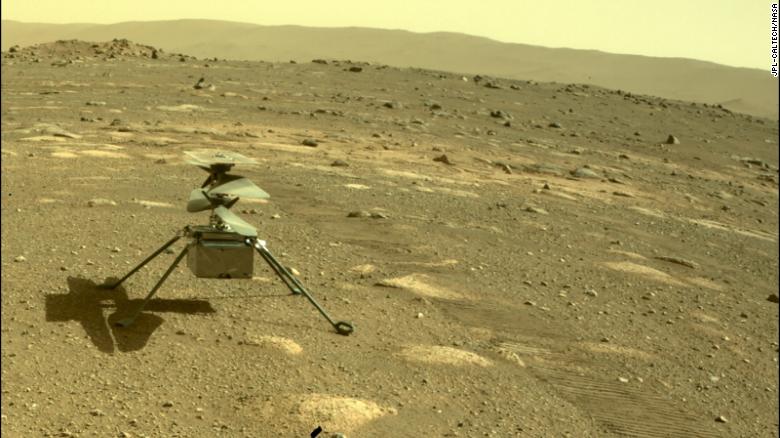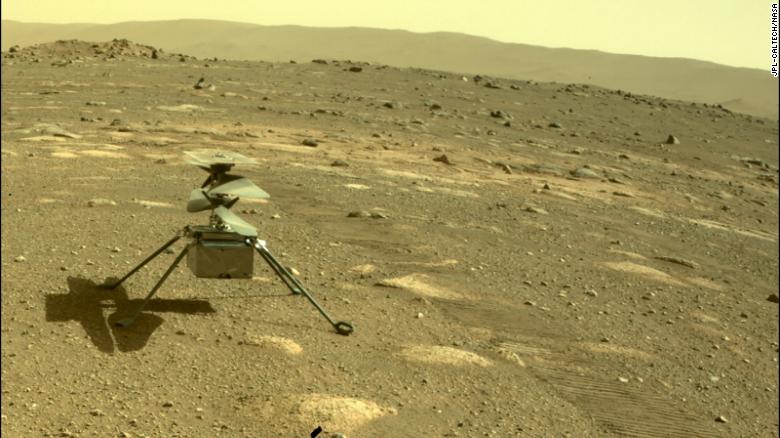As it prepares to make history on Mars, NASA’s helicopter survives its first night on the surface.
The Ingenuity helicopter made it through its first night on the frigid surface of Mars, marking an essential step in the rotorcraft’s journey toward its historic first flight. Temperatures in Jezero Crater, an ancient lake bed on Mars where the Perseverance rover and Ingenuity helicopter are currently stationed, can drop to minus 130 degrees Fahrenheit – dangerously low for the helicopter’s electrical and battery components.
Before the historic first flight of the four-pound aircraft, NASA’s Mars rover dubbed “Perseverance” dropped off “Ingenuity.”
From the Perseverance’s belly to the surface of Mars, the helicopter dropped four inches. Although a four-inch drop may not seem like much, the main goal was to make a successful landing, which is a significant achievement.
Before dropping the final 4 inches to the Martian surface, Ingenuity performed a series of movements from beneath the rover that resembled a butterfly’s metamorphosis.
When Ingenuity takes to the skies, which could happen as early as April 11, it will be the first powered, controlled flight on another world. Ingenuity carries a swatch of fabric from the Wright Brothers’ plane, Flyer 1, to pay tribute to the first such feat accomplished on Earth.
Ingenuity also needed to be light enough to fly through the Martian atmosphere, which contains only 1% of the atmosphere found on Earth, while still having enough power to self-heat and survive the frigid Martian nights.
As it prepares to make history on Mars, NASA’s helicopter survives its first night on the surface.
The Ingenuity helicopter made it through its first night on the frigid surface of Mars, marking an essential step in the rotorcraft’s journey toward its historic first flight. Temperatures in Jezero Crater, an ancient lake bed on Mars where the Perseverance rover and Ingenuity helicopter are currently stationed, can drop to minus 130 degrees Fahrenheit – dangerously low for the helicopter’s electrical and battery components.
Before the historic first flight of the four-pound aircraft, NASA’s Mars rover dubbed “Perseverance” dropped off “Ingenuity.”
From the Perseverance’s belly to the surface of Mars, the helicopter dropped four inches. Although a four-inch drop may not seem like much, the main goal was to make a successful landing, which is a significant achievement.
Before dropping the final 4 inches to the Martian surface, Ingenuity performed a series of movements from beneath the rover that resembled a butterfly’s metamorphosis.
When Ingenuity takes to the skies, which could happen as early as April 11, it will be the first powered, controlled flight on another world. Ingenuity carries a swatch of fabric from the Wright Brothers’ plane, Flyer 1, to pay tribute to the first such feat accomplished on Earth.
Ingenuity also needed to be light enough to fly through the Martian atmosphere, which contains only 1% of the atmosphere found on Earth, while still having enough power to self-heat and survive the frigid Martian nights.



